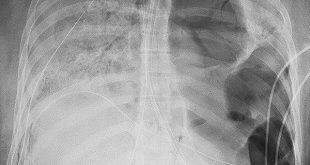
The rates are projected to remain relatively stable for the short to mid-term
Kampala, Uganda | PATRICIA AKANKWATSA | Rents for residential properties in the prime locations in Kampala increased in the second half of 2021 on the back of returning expatriates and ongoing developments in the oil and gas sector, the latest market performance review by a property management, Knight Frank, shows.
The report shows that average rent for 2- and 3-bedroom apartments increased by 3% and 4% respectively during the period under review owed to increased occupancy of prime residential accommodation in Kololo, Nakasero, Bukoto, Bugolobi and Naguru suburbs.
However, there was a noticeable increase in demand for 1- and 2-bedroom units in the second half of the year, indicating that fewer expatriate families of 3 – 5 members were coming into the country than was the case previously.
“The period also registered an increase in inquiries from Ugandans in the diaspora looking to buy property,” the report notes, adding that there was a 9% increase in the stock of prime residential accommodation – approximately 400 apartment units – in the pipeline with 150 units expected in Kampala’s residential prime suburbs in the next 12 months.
Judy Rugasira, the managing director at Knight Frank Uganda, said developers continue to show interest in joint venture options in which landowners cede land as their equity contribution to the project, in return for the number of apartments correlated to the value of the land, as a way of entering the development and investment market and spreading the risk.
She said there has also been increased leasing and sales activity in the secondary neighbourhoods and greater suburbs of Ntinda, Naalya, Kulambiro, Kisaasi, Makindye, Lweza and Kigo because of improved road infrastructure and increased access to services and utilities.
“Tenants have also been observed to opt for accommodation in these suburbs because of the slightly lower rents, coupled with the quality of available stock which is newer and similar to that provided in the prime residential suburbs,” she said during the report launch on Jan.24.
Lucy Kaitesi, the head residential agency at Knight Frank, said residential housing developers are now more aware and appreciative of the fact that effective demand for houses is greatest within $30,000 and $100,000 price range.
Similarly, office and leasing activity continued to improve steadily with a noticeable increase in activity recorded in the second half of 2021 compared to the same period in 2020 driven largely by oil affiliated companies, financial institutions, audit and accounting firms, consultancies, medical organizations, insurance companies, government bodies and non-governmental organizations. Uganda hopes to start oil production in 2025.
Though the rising demand for Grade A space has been partly met by the new developments that were completed in 2021, rents have gone up by 3.6%.
However, the increasing demand for office space has led- to a steady shortage in the availability of prime space for immediate occupancy, according to Sharon Kamayangi, the head of occupier services and commercial agency at Knight Frank.
“If this trend continues, we should see a steady return to pre- COVID rental levels in the short to mid-term,” she said.
Kamayangi added that the office development for owner-occupation has continued to regain traction with examples such as the joint head office of Uganda Road Fund and Public Procurement and Disposal of Assets.
Retail sector performs below pre-COVID level
Meanwhile, the retail sector performed 12% below the pre-COVID-19 levels due to depressed spending by consumers and restricted trading hours.
Marc Du Toit, the head of retail agency and management at Knight Frank Uganda said COVID-19 induced lockdown and its effects such as curfew had a big impact on the retail segment.
“Uganda is a much-later trading consumer market because of the safety and security we enjoy here compared to the likes of Kenya, Tanzania, and South Africa etc. Retail here trades in the evenings into the night. Even in the arcades downtown, there is no activity in the morning hours but starts at 11 am and goes to 8 pm or 9 pm. So, the curfew has had a big impact on retail without a doubt,” he said, adding that there was depressed consumer spending as a result of the curfew.
Rent likely to remain stable
Going forward, Du Toit said that there will be increased activity following the opening of the economy amidst the COVID-19 pandemic.
“Occupiers and investors alike are keen to make up for the lost time and money and we are seeing this in the increased activity across property sectors in general,” he said.
“There is growing recognition that coronavirus is something we will live with over long term and businesses need to get to actualize their long-term plans.
The report envisages that prime office occupancies and rent will remain stable in the first half of 2022 on the back of increased leasing activity from the oil and gas sector in the short midterm and an increase in demand for co-working space and consultants who vacated their offices during the pandemic to avoid paying rent as their businesses closed.
The report says that there is likely to be more flexibility in working from formal workplace settings in the office, or less formal ones like home or public places close to home. About residential properties, rents are projected to remain relatively stable for the short to mid-term as supply continues to outstrip demand.
****
 The Independent Uganda: You get the Truth we Pay the Price
The Independent Uganda: You get the Truth we Pay the Price



